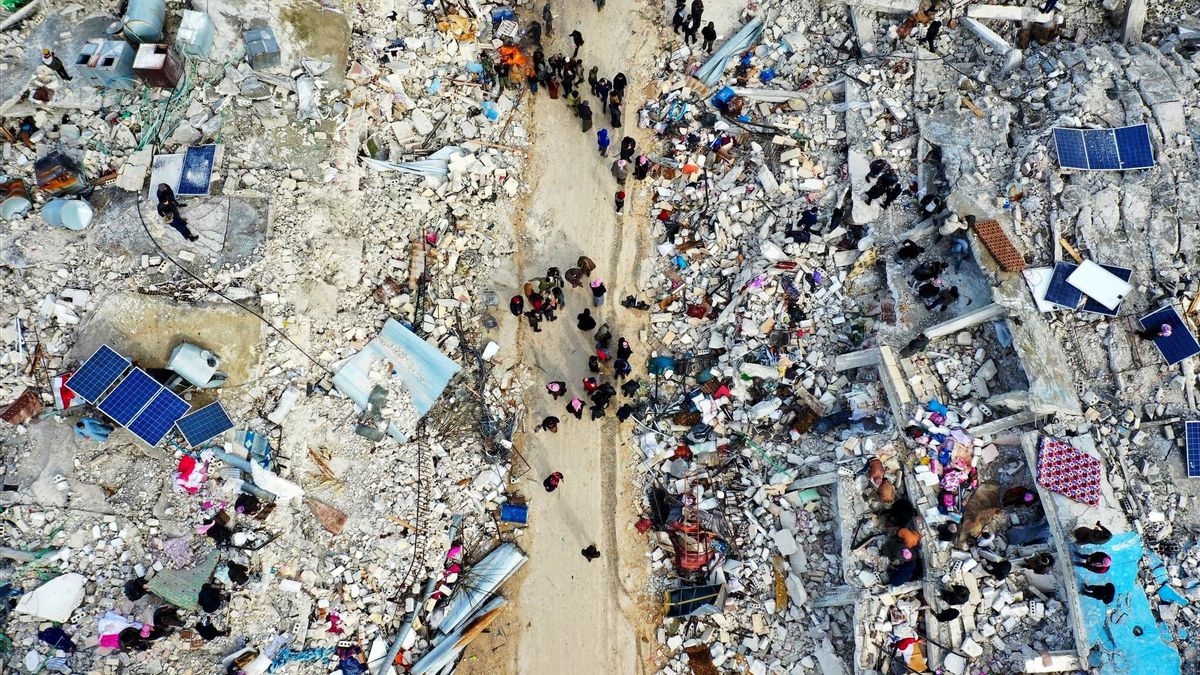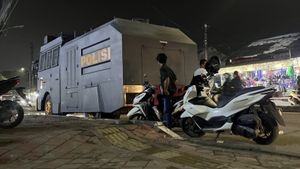JAKARTA - A number of experts highlight the quality of construction, when an earthquake measuring 7.8 on the Richter scale rocked Turkey on Monday, left tens of thousands of people dead and thousands of buildings destroyed.
Authorities say the death toll in Turkey and Syria has reached 15,383. Victims in Turkey jumped more than 3,000 in a matter of hours and are now 12,391, according to Turkey's Disaster Management and Emergency Agency Thursday, as reported by CNN on February 9.
Meanwhile, the total number of deaths in Syria is at least 2,992 people, including 1,730 people in rebel-held areas in the northwest, according to the civilian defense group "White Helmets", as well as an additional 1,262 deaths in parts controlled by the Syrian government.
In addition, the Turkish disaster agency said more than 5,700 buildings in Turkey collapsed due to echoes. With so much damage, both in Turkey and in neighboring Syria, many began to ask about the quality of infrastructure development in the tragedy.
"The most common thing is the type of collapse, which we call collapse, is a type of collapse that we engineers don't like seeing," said Mustafa Erdik, a professor of earthquake engineering at the University of Bogazici in Istanbul.
"In such collapses, it is difficult, as you can see, and very tragic to save lives. It makes search and rescue team operations very difficult," he explained.
Erdik told CNN the extensive image of the ruins after the earthquake showed "that there are variable design and construction qualities." He said the type of post-earthquake structure failure is usually in the form of a partial collapse.
"Total collapse is something you're always trying to avoid both in your actual design and design," he added.
Meanwhile, USGS structure engineer Kishor Jaiswal told CNN on Tuesday that Turkey had experienced a significant earthquake in the past, including an earthquake in 1999 that killed thousands of people.
Jaiswal said many parts of Turkey have been designated as very high seismic hazard zones and, thus, building regulations in the region stipulate construction projects must be resilient to the types of earthquakes as they are today, and in many cases avoid collapse, if properly implemented.
However, not all buildings are built according to modern Turkish seismic standards, Jaiswal said. Lack of design and construction, especially in older buildings, means many buildings cannot withstand shocks.
"If you don't design this structure for the seismic intensity they might face when designing it, this structure may not work properly," explains Jaiswal.
Erdik also said he believed many collapsed buildings were most likely "built before 1999". He added, there would also be examples where some buildings did not comply with the provisions.
"The provisions in Turkey are very modern, very similar to the US provisions. But once again, the suitability of the provisions is a problem that we are trying to overcome with legal and administrative procedures. We have permission from the city government and controls for design, controls for construction. But again, there are things that are lacking," he concluded.
The English, Chinese, Japanese, Arabic, and French versions are automatically generated by the AI. So there may still be inaccuracies in translating, please always see Indonesian as our main language. (system supported by DigitalSiber.id)








